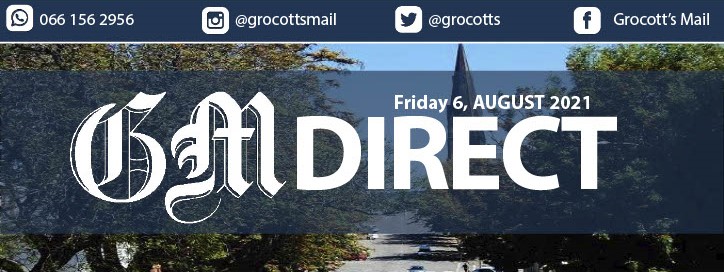By Prof Lynette Steenveld and Prof Harry Dugmore, former chair and deputy chair of the Grocott’s Mail Board
Grocott’s Mail turned 150 in 2020. While it had many great editors since Rhodes University bought it in 2003, it is with enormous sadness that we bid farewell to Sue Maclennan, who started in 2010 as a part-time sub-editor and succeeded Steven Lang as the editor at the end of 2013.
Sue displayed her ingenuity, steadfastness, and considerable skills as a newspaperwoman by taking over the reins of a grand old newspaper in severe financial distress.
In the 21st century, local news has been struggling everywhere. The downsizing or loss of local news organisations is largely due to business factors beyond the control of any single group of journalists.
For most of her tenure as editor, the paper was wobbling, but Sue stood strong. The main challenge was money: supporting a newspaper with three priorities (commitment to the community, educating future journalists, and remaining financially independent) in a declining economy with reduced advertising income and a widely differentiated and unequal ‘market’.
Sue rose to the various challenges with inspiring bravery, epitomising her vision of the paper as a ‘learning organisation’.
A newspaper is a complex machine with interrelated cogs that have to work in sync. The challenge of running such a machine is to know each cog’s work and be ready to replace it or oil it to keep the machine running. This isn’t possible unless one has the fortitude displayed by Sue. These are some of the major challenges she faced:
- Moving from publication twice a week, to once a week (May 2013), to becoming a free-sheet (end of 2017), to being a digital-only publication (April 2020).
- Becoming the editor without a deputy editor, news editor, or sub-editor, losing award-winning journalists (Municipal Reporter, Avuyile Mngxitama-Diko, and Sports Editor, Steven Penney), losing a financial manager, and then the stalwart production manager (Ronel Bowles), and sales staff. With each of these changes, Sue took on the jobs of others, extending herself beyond what seemed possible until she was the lone woman standing.
- Integrating Grocott’s into the School of Journalism and Media Studies, collaboratively pioneering new ways of teaching future journalists.
All of these changes had major implications for the kind of paper Grocott’s considered itself to be or had to become to meet the new financial challenges which precipitated each of these changes.
Through all this, Sue inspired confidence and hope. She didn’t moan or complain. She worked with the available human and financial resources, producing a publication that won awards as an excellent community newspaper even in its most financially challenging years.
Grocott’s Mail has been part of the ‘social cement’ that has, especially since 1994, bound the inhabitants of this small city together. The importance of this role cannot be overstated. Grocott’s allowed the city’s residents to get to know one another across the barriers of geography, race, and income levels in the post-apartheid renewal that South Africa sought.
The paper allowed businesses to connect with their customers and performers with their audiences; it announced births and celebrated weddings and sporting achievements, including soccer, weight-lifting, and ballroom dancing. Through its obituaries, it marked the passing of the spear from generation to generation. It kept a brave and critical eye on the machinations of the municipality, exposing scandal after scandal, and kept residents alert and informed about the happenings at schools and the university that are so central to life in the city.
A tiny band of journalists, always working under pressure with scant resources, worked to keep something important alive – a sense of place, a feeling of belonging, and the idea of mattering. Grocott’s helped us make sense of things.
Sue was committed to an expansive, inclusive, and transparent style of journalism that was not focussed on the sensational ‘calling out’ of problems but rather on the calling forth of solutions. Sue was ‘on the ground’ with her journalists and student journalist’s day and night, often in scary circumstances, making sure high-quality journalism got done but also making certain things got fixed if they could be fixed.
Some things, many things, have been beyond full repair, but Sue’s optimism of spirit saw her and her team through the direst times because she would engage all sides, seek answers, seek to calm things down with truth-telling, and fair and balanced reporting. Those with power could not ignore her, and those disempowered and marginalised were often able to get their stories told and their burdens shared.
We worked with Sue in different roles, and her steely determination, grace under fire, and wry humour never failed to impress those around her. Sue’s calm commitment to getting the carefully researched and verified word out has never wavered. She represents the best of what journalism has been, and indeed, the best of what journalism should aspire to be.


